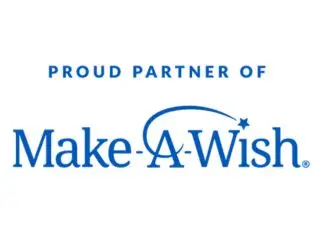Philadelphia saw a ruinous outbreak of yellow fever after a 31-year absence in 1793. New York physician noted that the disease was especially rampant among those who lived close to ships. In 1796, Edward Jenner discovered how to use the material of cowpox pustules as immunization against smallpox and published his work the next year. Harvard professor Benjamin Waterhouse introduced vaccinations in the United States in 1800, using the smallpox vaccine on his children. The vaccination was endorsed by the Empress of Russia, as well as the State of Massachusetts in the following years. Jenner credited his friend, physician Richard denning, with the origin of the term “vaccination” form the Latin word for cow, vacca.
In 1803, King Charles IV of Spain sent 22 vaccinated (abandoned) children with royal physician Francisco Xavier de Balmis to the Spanish colonies to initiate vaccination in the Americas. U.S. Congress and President James Madison established the National Vaccine Agency in in 1813. While smallpox infections dropped significantly in the next decades, deadly cholera pandemics sweep countries all over the world. In 1826, diphtheria (after the Greek word for leather, describing the coating of the throat) is given its name after being called many different terms beforehand. The 1830s saw the first cases of rabies in humans in France after being bitten by animals.
Measles was still killing many children in the American Southwest in the second half of the 19th
In the late 1830s and early 1840s, new methods to increase potency and supply of the smallpox vaccine, like retro- and serial vaccination of cows, were developed. Britain banned variolation in 1840. In 1841, the term “rubella” was first used to describe the outbreak of this disease in India. In 1854, Italian physician Filippo Pacini identified the Cholera bacterium and linked to the disease itself. During the cholera epidemic in London in the 1850s, physician John Snow made the connection between the disease and contaminated water. In 1855, Massachusetts became the first state introduce a law requiring school children to be vaccinated. However, smallpox and measles broke out among the troops during the Civil War in the 1860s. Meanwhile in France, chemist and microbiologist Louis Pasteur began his research regarding infectious diseases with silkworms. Concerns about the transmission of diseases like syphilis or leprosy via arm-to-arm vaccinations led to the development of the animal vaccine in France, where a calf would be inoculated with cowpox. This practice was adopted by the United States and other countries the 1860s and 1870s. Germany introduced a compulsory smallpox vaccination law in 1874. Measles was still killing many children in the American Southwest in the second half of the 19th century. Yellow fever crippled the Mississippi Valley in 1878, rendering it one of the most devastating medical disasters in the history of the United States. In 1877, Pasteur identified the anthrax bacilli, which led to the anthrax vaccine for livestock a few years later. In the 1880s, Pasteur started to investigate rabies. A year later, Pasteur and U.S. Army physician George Miller Sternberg both (separately) discovered the Streptococcus pneumoniae bacterium which is responsible for pneumonia and meningitis, as well as other diseases. Cuban physician Carlos Finlay identified the mosquito as the transmitter of yellow fever in 1881, though this wasn’t widely acknowledged until two decades later. The early 1880s was also when the first anti-vaccine arguments spread in the United States. In 1882, German physician and microbiologist Robert Koch discovered the bacillus that causes tuberculosis and subsequently began to work on a vaccine against the disease. Koch also travelled to Egypt and India to investigate cholera. He isolated the cholera bacillus in 1884. Around the same time, Edwin Klebs, a Swiss-German pathologist, identified and described the bacterium that causes diphtheria, while German bacteriologist Friedrich Loeffler identified the agent that caused diphtheria. Spanish physician Jamie Ferrán developed a vaccine against cholera in 1885. The same year, the animal vaccine against rabies was successfully used in humans. English physician S. Monkton Copeman demonstrated that glycerin acted as a germicide when added to vaccines in 1891. The United States saw its first polio outbreak in 1894, while its contagious nature was established in 1905. The disease would kill and paralyze thousands and thousands of Americans in the next decades. In 1895, the Mulford Company of Philadelphia began producing diphtheria antitoxin in the United States. Anti-vaccination movements became louder in parts of Europe in the United States; Britain began to allow exemptions for “conscientious objectors.”
Sources:
http://www.cdc.gov/vaccines/hcp/patient-ed/conversations/downloads/vacsafe-understand-color-office.pdf
http://www.historyofvaccines.org/content/how-vaccines-work
https://www.iavi.org/How-To-Help/Learn/How-Vaccines-Work/Pages/default.aspx
http://www.who.int/topics/vaccines/en/
http://www.historyofvaccines.org/content/herd-immunity-0
http://www.immunize.org/timeline/
http://www.historyofvaccines.org/content/timelines/all



